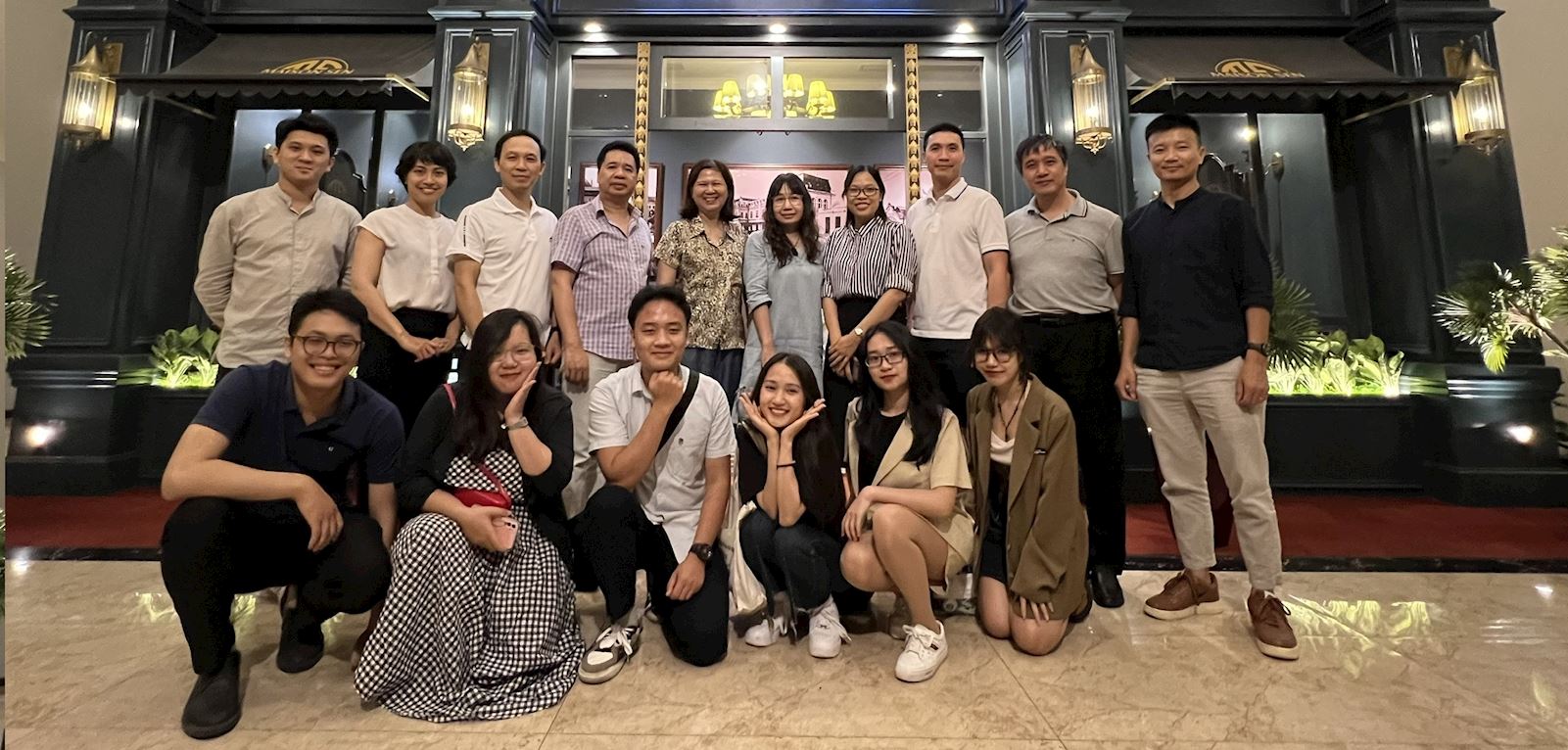Passing two qualifying rounds to reach the final round, excellently defeating many other projects around the world, the student group of Hanoi University of Civil Engineering (HUCE) was honored to become one of four teams with the best project in the Attached House category, at the International Solar Decathlon Design Challenge 2023. The HUCE team was also the first Vietnamese representative to participate in this prestigious contest.
On April 22, 2023, under the guidance of Assoc. Liliana Beltran (Texas A&M University, USA), Dr. Pham Thi Hai Ha and the lecturers of HUCE and the support of the 1+1>2 Architecture Office, a group of students from HUCE and Texas A&M University have passed two rigorous selection rounds to reach the Final of Solar Decathlon Design Challenge 2023 within the project "Khuoi Ky House" organized by US Department of Energy in Trung Khanh district, Cao Bang province. The student group excellently entered the top 4 in the Attached House category and was awarded the "Team Spirit Award". This is the first time students of HUCE (also Vietnamese students in general) to participate and been honored at a prestigious and influential competition at the international level.
The design of a group of houses for Tay ethnic people in Khuoi Ky stone village (Cao Bang)
Khuoi Ky village is well known for its natural beauty and cultural heritage. Visitors can experience the life of the ethnic minority community, visit Ban Gioc waterfall - a famous landscape of Vietnam with long hiking trails attracting nature enthusiasts. The idea of the designed project is inspired by a desire to promote and preserve the traditional cultural values of the stone village over 400 years old, simultaneously, improving the living space more comfortably while ensuring energy efficiency and reducing environmental impact by modern techniques and technologies. The concept of the project is to design a complex with three blocks, which house an extended family of three generations. Each block occupies an area of 60-80 square meters.
- The complex is built with a traditional stone foundation and frame structure. The shape of the house depends on the terrain. The back of the house is leaning against the mountain while the front of the house is facing the Khuoi Ky stream. Floors are designed high to safeguard against flooding.
- Materials are mainly stone, bamboo, locally grown forest wood and some environmentally friendly insulation materials such as pressed straw panels, plywood boards and a combination of EPS materials to avoid thermal bridging at intersectional structural positions. These materials ensure keep the indoor spaces warm in the cold season when the outside temperature fluctuates around 10oC. The yin and yang tile roof is used to preserve the traditional architecture of the ancient village, in combination with a ceiling made from bamboo to increase heat insulation. The materials ensure the mechanical and physical requirements of bearing, heat resistance, radiant heat reduction, sound absorption, no emission of harmful gases and protection of indoor air quality.
- The complex is designed to be cooled mainly by natural ventilation and only uses air conditioning in the summer when the outside temperature fluctuates around 32 0 C.
- In order to achieve energy balance, in addition to passive design strategies that improve thermal comfort efficiency such as choosing a favorable orientation to reduce summer solar radiation, designing insulation and ventilation through rooms, and natural lighting, the project also uses a solar panel system on the roof with a capacity of 675-700W, facing Southeast, inclined at 211 0 and 21 0 angles to optimize the efficiency of solar radiation accumulation. The solar battery system produces 1,232 kWh/m 2, and 2,868 kW per block for the whole year.
The Solar Decathlon competition was introduced by the US Department of Energy in 2002. The competition includes two challenges "Design Challenge" and "Build Challenge" with 10 categories. This is a very prestigious competition for the design and construction of high energy efficiency, low carbon emissions, which helps to mitigate climate change and improve people's quality of life with economic affordability. Up to now, the Solar Decathlon competition has attracted more than 790 universities and more than 25,000 participants in more than 40 countries.
Solar Decathlon Design Challenge 2023 requires interdisciplinary integrated knowledge (architecture - construction - materials - economy - environment). It demands considerable effort from the student group as well as the entire instructors. This is also a critical topic but still quite novel to Vietnam. The competition will be an opportunity to open up the trend of interdisciplinary and cross-sectoral integration in the development of Architecture - Construction associated with the Environment and Sustainable Development.

Group photo of students from HUCE with their instructors

Representative Students from Texas A&M University with Assoc. Liliana Beltran
Certificate of "Team Spirit Award" from the organizers awarded to students of Texas A&M University and Hanoi University of Civil Engineering
Design diagram of integrated energy and environment control
Design diagram of integrated energy and environment control
Technical system of the house
Assessment of the earth's warming potential in the lifecycle stages of buildings
Zero Energy Home (-1) certificate according to the HERS Rating System

Group meeting in Khuoi Ky village to prepare for surveying and measuring work

The group of students surveyed the architectural and construction characteristics and learned about the culture and life of the Tay ethnic group in Khuoi Ky village

















